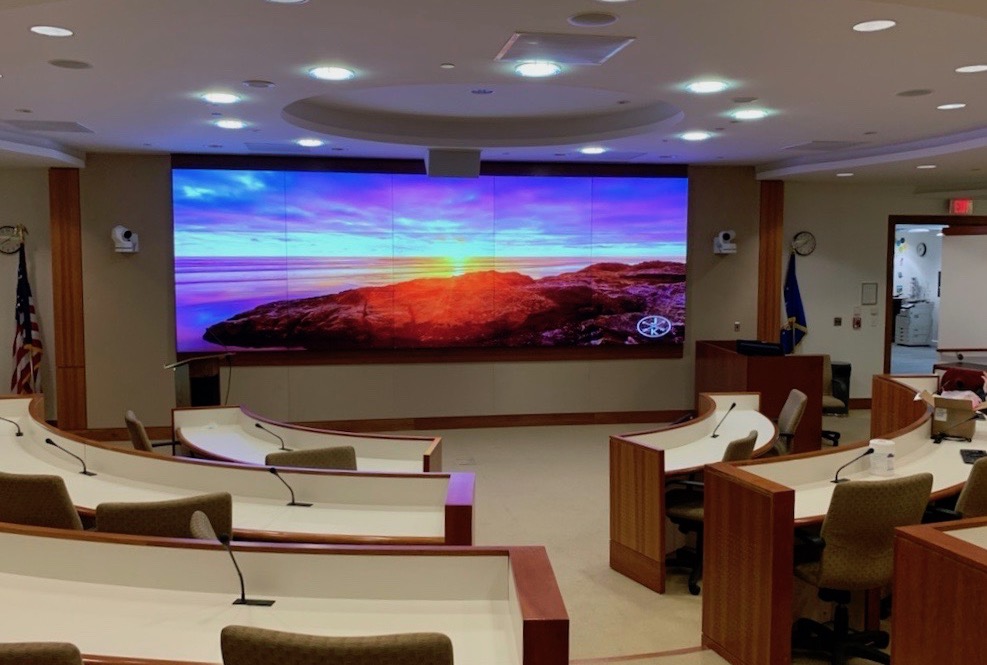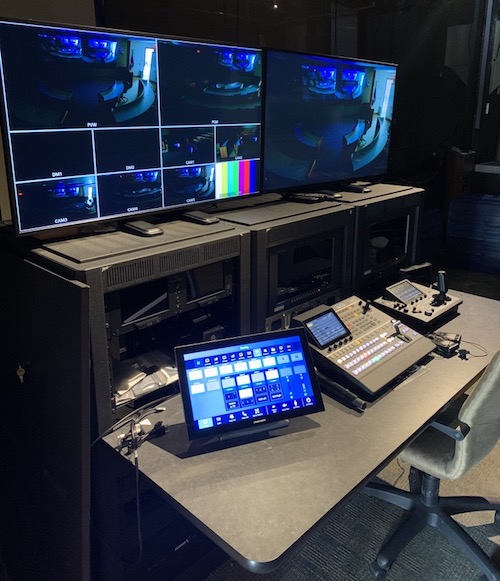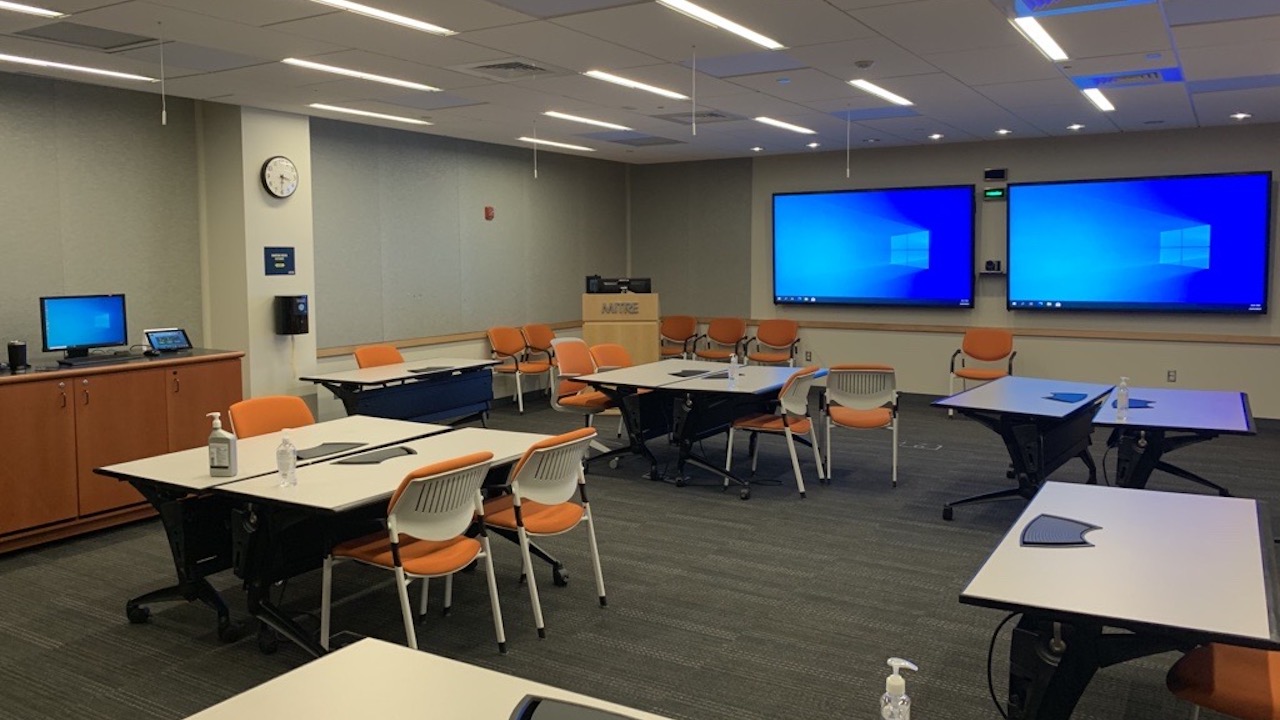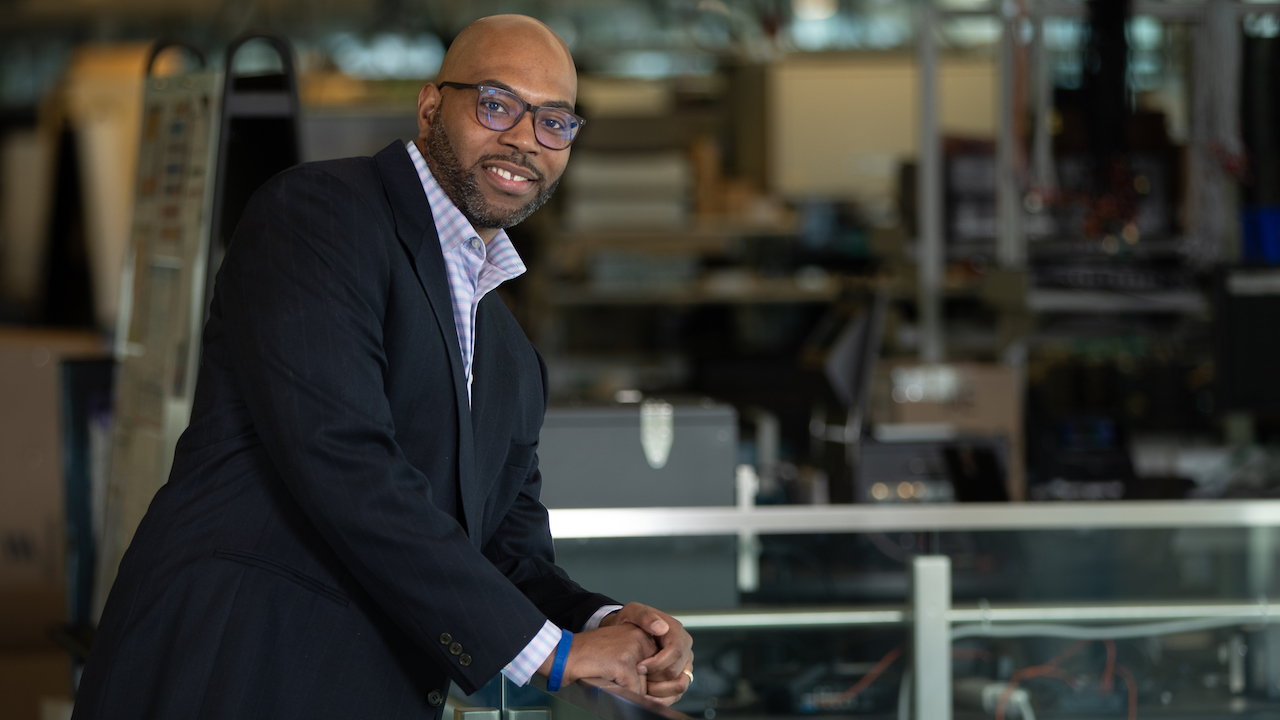The ripple effects of COVID-19 are hard to predict, but there is no doubt that the pandemic will dramatically alter workplace culture. One in four Americans will be working remotely in 2021, according to an Upwork survey. Does this figure signal a bleak outlook for corporate AV professionals? Quite the opposite, according to Nyere Hollingsworth, group leader for unified communications and collaboration services with the MITRE Corporation. With a perspective shaped by his high-level technology experience, Hollingsworth sees change as inevitable, and with it are tremendous opportunities to reimagine AV in the enterprise.
Related: The Technology Manager's Guide to Collaboration in the Post-COVID World
Hollingsworth rejects the notion that AV innovation will suffer as flex working becomes the norm. The post-COVID era might just be the most exciting time to be in AV, he says.
8,000 Strong
Hollingsworth’s extensive background managing pro AV and UCC technologies—from Zoom rollouts to traditional AV deployments—gives him a nuanced view of corporate technology. His team is responsible for making sure MITRE’s 8,000-plus employees “can see and hear each other, no matter where they are, or what they are working on,” he said.
From an all-hands meeting in an auditorium, to upgrading Teams and Zoom for distributed teams working across the country during the pandemic, Hollingsworth’s team keeps the show running. Whatever tools are needed for productivity—making informed decisions, presenting, and collaborating across MITRE’s many touchpoints in industry and academia—Hollingsworth’s team has them covered.
“We buy all of the major pro AV components on practically a daily basis,” he said. “We manage media streaming in the conference room and provide auditorium support with a high level of service.” His team also interfaces with the company’s telephony infrastructure which has migrated to softphones.
AV Versus IT: It’s Not a Debate
With the broad range of collaboration tools in his purview, Hollingsworth actually finds the AV-versus-IT debate amusing. “It’s all essential technology,” he said. From installed AV to software-based telephony, “I've never known AV and IT to be separate. They are not separate in most use cases.”

When Hollingsworth started his career as a technologist, he gained valuable experience with Tandberg videoconferencing systems. He was focused on getting the in-room AV working, but also making sure that he could seamlessly move audio and video content to foreign destinations. Every space needed consistently precise levels of AV intelligibility and fidelity. “As a function of that,” he explained, “you have to learn elements of networking and telephony, as it all influences end-user communications.”
The future of flex work, with greater emphasis on hybrid spaces, will require even more networking and software acumen.
AV Has Never Been More Important
Some people might be self-conscious about AV’s role in the evolving corporate landscape, but Hollingsworth urges audiovisual professionals to proudly claim their places. “We’re all technology professionals,” he said, “just like a systems engineer, just like a help desk person, or a network engineer.”
He views tech stakeholders like a band, with some people playing different instruments. He also believes that the audiovisual contribution will become more crucial as companies pivot, iterate, and forge new pathways for growth.

Where AV diverges from other disciplines is an asset, not a vulnerability. Audiovisual professionals have the rare opportunity to interface with every employee in a company, from the intern that just started, to the CEO. “It's important to keep that perspective, to appreciate the value that AV specialists bring to the table,” Hollingsworth said. “We fundamentally enhance human physiology. To that end, giving someone the ability to communicate across distances is a powerful capability that should not be ignored.”
Since audiovisual and UCC technologies are so versatile and all-encompassing, Hollingsworth views AV pros as “some of the most well-rounded individuals in an organization.”
Translate AV’s Value, Use Storytelling
Hollingsworth stressed the importance of advocating for AV as workplace culture evolves. “There are so many opportunities to be creative and innovative in leveraging technology right now,” he said. “If you can explain high-quality solutions to the people who are responsible for budgets and investing in those solutions, they will continue to seek your advice. They will continue to allow you to utilize technology to make their organizations better.”
Outlook after COVID
There’s no denying that “the office” will continue to change. “We will be working a little bit differently,” Hollingsworth said, “but not that much differently.” A surprising benefit of the pandemic is that AV is front and center in companies large and small. “Before, we were able to hide in the corner,” he said. “People didn't know what we were doing, or why a conference room system or videoconference worked.”
A realist as well as an optimistic, Hollingsworth knows that some reliable and hallmark AV opportunities are “gone or will go away. I won't be shy about that,” he said. “But I think this new way of working is going to create opportunities that will continue to drive business forward.”
Passionate about growth prospects after COVID, Hollingsworth says to unlock AV’s full potential, “we must enable people to communicate with each other in more immersive and more lifelike ways. Interactions are going to be more remote than they historically have been before. This will be the guiding theme across the US, if not the world, as more and more companies move toward flex work models.”
Fewer Spaces, But Higher Quality
Large companies are rethinking their footprints: downsizing, abandoning, or subleasing spaces. But the workplace is still the place where ideas will be formed, Hollingsworth contends. Marketing, selling, and the distribution of ideas will happen remotely, but the core ideation will remain the provenance of the on-site office.

“The ‘office’ is where face-to-face interactions will be important, so we need to build different kinds of spaces,” he said. “We might not be building as many of them, but the ones that we do build must deliver a quality, lifelike experience, even for hybrid setups [with employees dialing in from remote locations]. It’s challenging and it’s expensive to do in a conference room, but I can foresee companies investing in this kind of technology. They won't do it for 20 rooms, but they may do it for five. And as you net out the cost of doing these new kinds of spaces, I think it's going to be about the same from a budget and pricing perspective.”
Focus on Exceptional Experiences
MITRE is the process of redesigning its corporate spaces. “People will be coming into a conference room, and we cannot have everybody's face be the size of a postage stamp, like a Zoom screen,” Hollingsworth said. “The answer lies in new agile, high-quality camera technologies. “It's going to be different. We're going to be looking for solutions that autofocus and track individual participants.”
Audio is also reasserting its relevance in the hybrid era. MITRE hopes to deploy microphone technologies such as beamforming microphone arrays, which have been “showing their value across smaller spaces where they traditionally haven’t been deployed.”
Hollingsworth is also looking at new collaboration tools that let teams stitch images together and reorient layouts. The goal: making every experience more immersive. “I'm interested to see where software manufacturers will go, to bring all components together, to make it feel like we're looking at the same canvas, regardless of where we are and how we're engaging with that meeting.”
AV for Sustainable Growth
Hollingsworth’s mission at MITRE is to keep people connected: “That’s where our technologies and solutions will play into the future success of our organization,” he said. “As long as we can keep people connected sustainably—wherever they are and whatever ‘connected’ means to them—we will have done our job. We will continue to keep our organization growing, hitting benchmarks, and delivering value to our end customers who are looking for our ideas and our services.”
“We're not going backward,” Hollingsworth added. “Some older models are dead. But it’s an exciting time to reimagine how we do all of this, and I'm here for it.”
Margot Douaihy, PhD, teaches at Franklin Pierce University.

